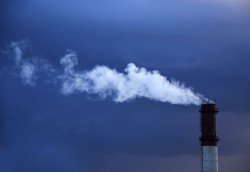Following a residual risk and technology review of its 2003 National Emissions Standards for Hazardous Air Pollutants (NESHAP) for facilities engaged in surface coating of wood building products, the EPA is proposing not to revise the existing emissions limits.
The proposal does include several amendments, mainly elimination of the startup, shutdown, and malfunction (SSM) exemption from emissions limits; changes to provisions in which SSM elements are no longer needed (e.g., monitoring and recordkeeping); addition of a compliance demonstration equation; addition of a performance testing requirement when add-on emissions control equipment is used; addition of an electronic reporting requirement; addition of an EPA test method for measuring isocyanates in coatings; and incorporation by reference of voluntary American National Standards Institute (ANSI) and ASTM International test methods.
CAA Requirements
Under the Clean Air Act (CAA), within 8 years of setting a NESHAP, the EPA must assess the remaining health risks from each source category to determine whether the standard protects public health with an ample margin of safety and protects against adverse environmental effects. Also, every 8 years after setting a NESHAP, the Agency must review and revise the standards, if necessary, to account for improvements in air pollution controls and/or prevention.
Cancer Risk Acceptable
The decision not to revise the hazardous air pollutant (HAP) emissions limits means, first, that the Agency has determined that the existing emissions limits protect human health with an ample margin of safety; the Agency defines this phrase as a maximum individual lifetime cancer risk of approximately100 in 1 million. Apart from the exception noted below, the Agency found no lifetime cancer risks to people above 1 in 1 million. Second, the review determined that there have been no cost-effective technological developments since issuance of the 2003 NESHAP, which would reduce HAP emissions at the affected facilities.

In the original NESHAP, the Agency found that the most prevalent form of emissions control for surface coating of wood building products is the use of low-volatile organic compound (VOC) and low-HAP coatings, such as waterborne or ultraviolet-cured coatings. Based on its proposal, the EPA continues to believe that these emissions controls represent the maximum achievable control technology (MACT) for the 55 facilities regulated under the NESHAP.
Higher Risk
Although the EPA found no instances of unacceptable cancer risks to people from the regulated facilities, it noted that approximately 800 people in the exposed population face a cancer risk of 6 in 1 million because of formaldehyde emissions from one facility. According to the Agency, 84 percent of this group is nonwhite, including 75 percent African American. Again, a lifetime cancer risk of 6 in 1 million falls far short of the 100 in 1 million threshold for an ample margin of safety. Also, for all facilities and all affected populations, the EPA said it found little potential concern for acute noncancer health impacts.
Impact of SSM Amendment Not Quantified
The EPA states that under the level of control required by the 2003 NESHAP, affected facilities are emitting approximately 260 tons of HAPs a year. This compares with HAP emissions of 14,311 tons annually before development of the 2003 standard. The Agency adds that it was unable to quantify the specific emissions reductions associated with eliminating the SSM exemption. “However, eliminating the SSM exemption will reduce emissions by requiring facilities to meet the applicable standard during SSM periods,” the EPA states.
The proposal was published in the May 16, 2018, FR.

